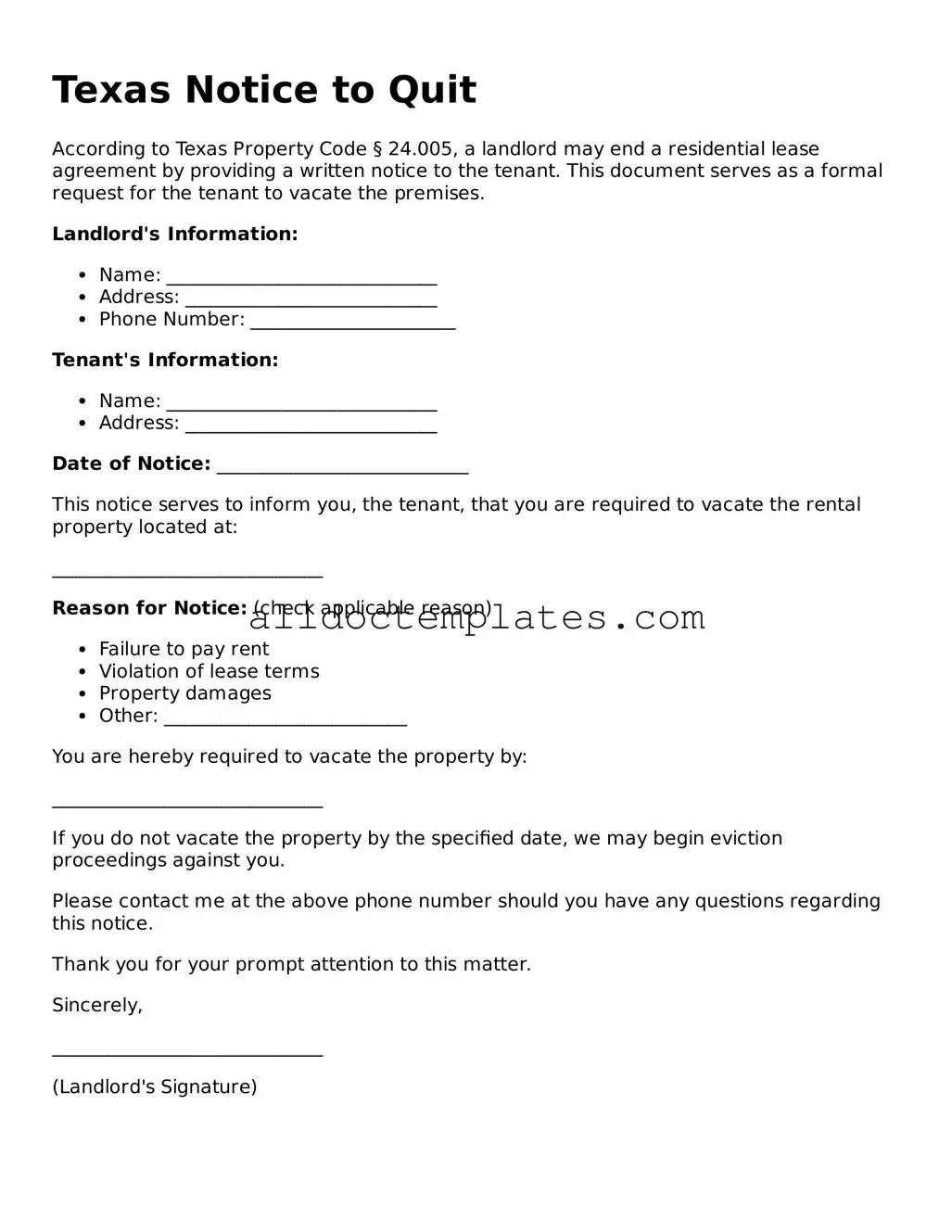Texas Notice to Quit
According to Texas Property Code § 24.005, a landlord may end a residential lease agreement by providing a written notice to the tenant. This document serves as a formal request for the tenant to vacate the premises.
Landlord's Information:
- Name: _____________________________
- Address: ___________________________
- Phone Number: ______________________
Tenant's Information:
- Name: _____________________________
- Address: ___________________________
Date of Notice: ___________________________
This notice serves to inform you, the tenant, that you are required to vacate the rental property located at:
_____________________________
Reason for Notice: (check applicable reason)
- Failure to pay rent
- Violation of lease terms
- Property damages
- Other: __________________________
You are hereby required to vacate the property by:
_____________________________
If you do not vacate the property by the specified date, we may begin eviction proceedings against you.
Please contact me at the above phone number should you have any questions regarding this notice.
Thank you for your prompt attention to this matter.
Sincerely,
_____________________________
(Landlord's Signature)
